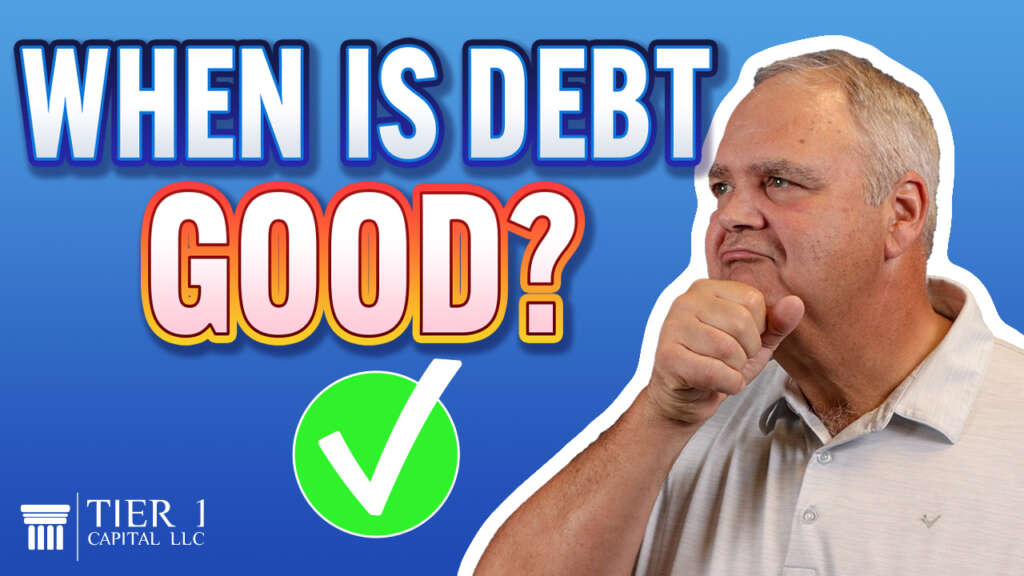
Do you realize that there’s a difference between good debt and bad debt?
You see when I started in financial services, we were told that all debt was bad. But it wasn’t until I put things into practice that I realized, there’s actually good debt and bad debt.
You see, good debt is debt that’s backed by an asset. Bad debt, such as credit card debt, or student loan debt, are debts that are not backed by any assets. You see when you take out credit card debt or go and get a college degree and take on student debt, they give you that debt, that asset, that money to fund your purchases based on your ability to earn income and the potential to pay them back. They don’t have anything collateralized against an asset.
So what are some examples of good debt, and what does that look like, and how do you use that to get ahead financially?
Well, let’s look at a mortgage. You have the house as collateral against the mortgage. And in general, you’re going to have to put up some of your money. It’s called a down payment. So you might buy a $250,000 house, put down $40,000 as a down payment, and you’re financing 210.
Well, the bank’s in pretty good shape because if you default on that loan, the bank only needs to sell that house for 210,000. And the house theoretically should be worth 250,000. They should not have any problem getting equal with what they owe.
Now, let’s contrast that with a car loan. Typically, a good car loan is five years. It takes five years to pay that loan back. And that pretty much keeps up with the price of the depreciation of the value.
However, car loans these days, because the price of cars is now astronomical for any car, many people are financing over six or seven years. But what happens is if something happens to that car or you default on the loan, the value of the car is often less than what you owe on that loan.
The going rate on a car loan is about eight and a half to 9%. The going rate on a mortgage is six and a half to 7%. And the banks know this. That’s why they’ll give us a lower interest rate for an asset that has much greater value.
Let’s take a look at a third type of collateralized loan, a life insurance policy loan. Life insurance policy loans are leveraged against the equity of your policy, the cash value, and the unique thing about this is that the entity that’s giving you the loan, the insurance company, is also the entity that’s guaranteeing the cash value, the asset.
So consequently, they’ll charge you probably a much better rate. And more importantly, those loans are unstructured, which means you determine when, if, and how you pay back that loan.
Now, it is recommended that you cover at least the cost of the annual interest. You see each policy anniversary if you have an outstanding loan, the insurance company is going to charge you a loan interest bill. It’s recommended that you pay at minimum the loan interest because if you don’t, it’ll accrue onto the loan principal balance.
I was taught that all debt was bad. Then I found out that there’s actually good debt and bad debt. And through practice, we found that there’s actually better debt, and that’s debt that you own and control. That is a life insurance policy loan.
If you’d like to get started with a specially designed whole life insurance policy designed for cash accumulation, schedule your Free Strategy Session today.
Also, if you’d like to learn more about exactly how we put this process to work for our clients, check out our free webinar right on our home page. The Four Steps to Financial Freedom. It outlines exactly how we put this to work.
And remember, it’s not how much money you make and it’s how much money you keep that really matters.
